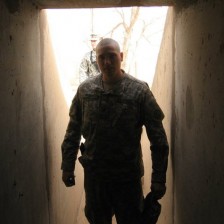Just sharing another great article I read. Jon
By CTD Blogger published on March 12, 2010 in Ammunition http://blog.cheaperthandirt.com/bullet-types/
Acronyms are everywhere in the gun and ammunition industry, and when reading through descriptions it is enormously helpful to know just what those acronyms stand for. We frequently get questions from customers regarding various bullet types in both handgun and rifle cartridges. It’s easy to see why: there are numerous terms and acronyms used to describe the bullets.
Let’s briefly go over the basic types of bullets that can be found on the market today.
- FMJ: Full Metal Jacket Metal cased and full metal jacket both refer to bullets with a metal coating that covers all of, or all but the base of, a bullet.
- MC: Metal Cased This is a term used by Remington to refer to their full metal jacketed bullets.
- HP: Hollow Point Hollow point bullets have a concave shaped tip that facilitates rapid expansion of the round upon impact.
- BT: Boat Tail Boat tail bullets have a streamlined base to facilitate better aerodynamics. Sometimes, these terms are mixed to make a new acronym.
- FMJBT: Full Metal Jacketed Boat Tail
- SJHP: The semi-jacketed hollow point (SJHP) is a bullet designed to give you all the stopping power and expansion of a normal hollow point but with a bit more penetration. The partial jacket acts as a platform for creating a predictable and uniform mushrooming effect upon impact with a target.
- JHP: Jacketed Hollow Point Jacketed Hollow Point bullets are similar in design to regular hollow point bullets, but have a copper jacket that normally covers everything but the hollowed portion of the round.
- JFP: Jacketed Flat Point Jacketed flat point rounds have a flat area of exposed lead at the tip.
- JSP: Jacketed Soft Point Jacketed soft point bullets usually have a spire pointed tip of exposed lead. JSP can also refer to a Jacketed spitzer point; spitzer meaning a sharply pointed bullet.
- JRN: Jacketed Round Nose Jacketed round nose bullets split the difference between JFP and JSP bullets and have a rounded tip of exposed lead.
- BTHP: Boat Tail Hollow Point
- BTSP: Boat Tail Soft Point Sometimes the letters in the acronyms are switched, so boat tail soft point may also be abbreviated as soft point boat tail or SPBT.
- EFMJ: Expanding Full Metal Jacket Expanding full metal jacketed rounds appear as and feed like a regular full metal jacket bullet, but have a construction that allows the case to collapse and the bullet to flatten upon impact.
- WC: Wad Cutter Wad cutter designs often appear to be nothing more than a cylinder, usually with a hollow base. This design is used in target practice to punch neat holes in the paper, rather than the ragged holes produced by more rounded design.Semi Wad Cutter (SWC) bullet
- SWC: Semi Wad Cutter Semi Wad Cutter bullets have a rounded nose that comes down to a cylinder that is slightly larger than the rounded section, giving the bullet a more aerodynamic shape while allowing it to punch clean holes in paper targets.
- RFP: Rounded Flat Point Rounded flat point bullets have a flat tip that is smaller than the bullet diameter and rounded shoulders.
- AP: Armor Piercing Armor piercing ammunition can have bullets with a variety of shapes, though in general they are spire pointed and full metal jacketed rounds that have a strong core designed to penetrate armor.
- API: Armor Piercing Incendiary Armor piercing incendiary ammunition has the same penetrating abilities of armor piercing bullets, but with the added function of bursting into an intense flame upon impact.
- Frangible Frangible ammunition is available under a number of trademarks; notably MagSafe, Glaser, and SinterFire. All of these rounds are characterized by a design that facilitates the rapid breakup of the bullet upon impact, thus reducing the chances of over-penetration or a ricochet.
This list is by no means exhaustive. There are other variations in bullet designs, many of which are proprietary and made only by certain manufacturers.


Great listing. You covered bunch of them. Great resource for the beginners. Thanks